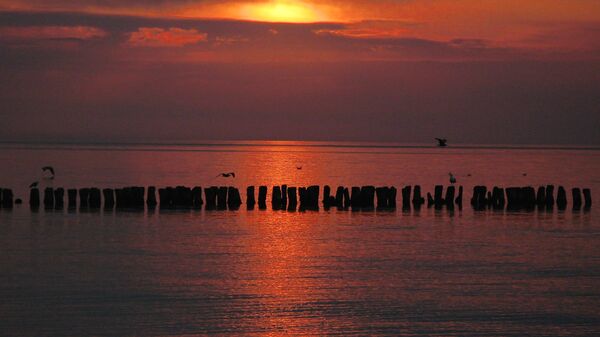Chemical weapons dumped into the Baltic Sea in the aftermath of WWII are presenting a greater and greater problem. Salvaging all of them is impossible for practical and economic reasons, and researchers are now working on a mechanism for determining which areas need to be addressed, the Finnish newspaper Hufvudstadsbladet reported, predicting that the sea will never get totally rid of the carelessly discarded arms.
With the axis powers defeated, the allies found a total of 300,000 netric tons of chemical weapons in Germany and Nazi-occupied areas. To address this problem as quickly as possible, partly to demilitarize and partly to prevent them from getting into unruly hands, a large proportion of these were dumped at sea. Most such dumping took place in the wake of WWII itself, but some continued on a smaller scale until the 1970s. The dumps took place as part of the 1945 Potsdam agreement.
All in all, hundreds of thousands of tons of mustard gas, arsenic bombs and a host of other toxins were dumped at various locations in the Baltic and the North Sea. At that time it was considered the reasonable way of doing things. Today, over 70 years later, the casings have eroded, allowing the chemicals to leak freely. As of today, military-degree chemicals can be traced to fish and other aquatic organisms.
READ MORE: Former 'Angry Bird' Wants to Dig Rail Tunnel Under Baltic Sea
"Small concentrations can actually be seen in fish," Martin Söderström, Research Coordinator at the Verifin Chemistry Institute in Helsinki, told Hufvudstadsbladet. At present, the toxins only affect fish, as their levels are still too low to pose a significant threat to humans. "This can change, however, and you understand how it can climb up the food chain."
In the last 15 years, several international projects have been carried out in order to understand the extent of the problem. Within the framework of the Polish-based Daimon project (Decision Aid for Marine Munitions), work has been underway to determine areas of the Baltic where the chemical arms could possibly be salvaged. The methodology of risk analysis is based on a Swedish tool.
"These are specific cases, for example where various processes at the seabed are scheduled, or near to ecologically vulnerable areas," Diamon project coordinator Jacek Beldowski said.
At other dump sites, such as the Bornholm Deep outside Denmark, the reservoirs lie one to two meters deep in the silt and are best if left undisturbed.
READ MORE: Out of Head: Microplastics in Seawater Makes Fish Go Nuts
Salvaging chemical arms from the seabed is an advanced, multi-step process, in which the chemicals are first redeployed in new containers together with surrounding sediment and shipped inland to be destroyed. As of today, special facilities exist in Germany and Belgium. However, due to heavy restrictions surrounding the shipment of chemical arms, mobile disposal facilities are likely to be moved closer to port areas.
Beldowski argued that this process is extremely expensive, so that no country can bear the costs alone. According to him, one idea would be to establish a joint fund similar to that established by the UN after WWII, where individual countries could apply for support with mine sweeping.
READ MORE: Phantom Pain: Undetonated WW2 Bombs Unnerve Norway




